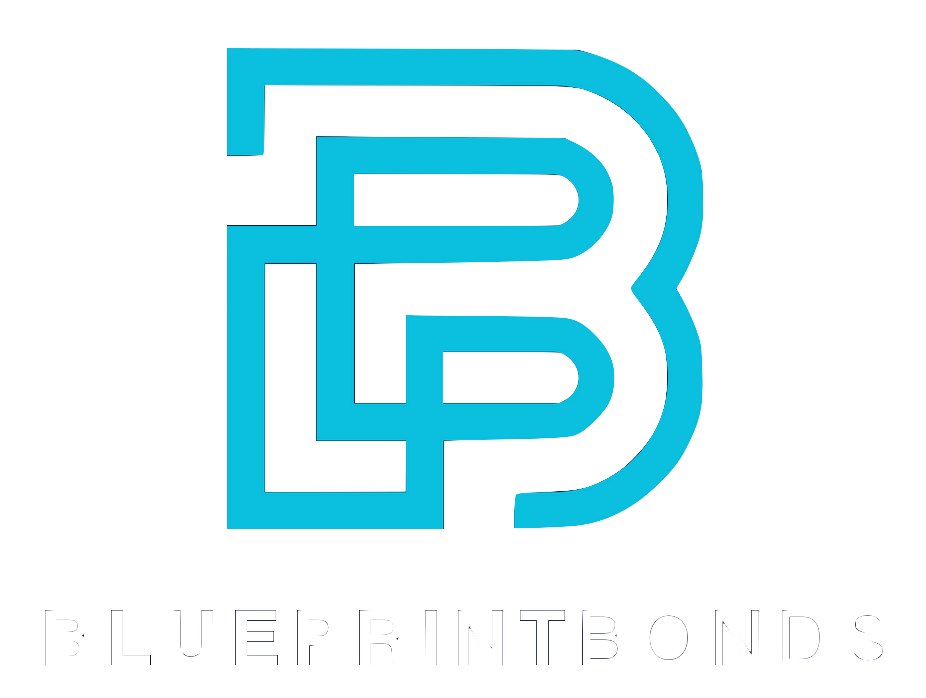For contractors preparing to submit bids on construction projects, securing the right bonds is a critical step that can make or break the opportunity to win work. Pre-bid bonding not only demonstrates financial stability and commitment but also protects project owners from potential risks associated with contractor default. Navigating this process requires a thorough understanding of the bonding requirements, project scope, and contractor qualifications.
Incorporating a systematic approach to pre-bid bonding helps contractors avoid costly mistakes and improves their chances of success. This article provides a comprehensive pre-bid bonding checklist tailored for contractors, highlighting essential considerations and best practices to streamline the bidding process. For a detailed overview of pre-bid preparations, contractors can refer to resources like the Pre-Bid Checklist for Job Estimators, which covers key elements in estimating and risk assessment.
Understanding the Importance of Pre-Bid Bonds
Pre-bid bonds, also known as bid bonds, serve as a financial guarantee that a contractor will enter into a contract if awarded the project and provide the required performance and payment bonds. They protect project owners by ensuring that only serious and qualified contractors participate in the bidding process. Without a valid bid bond, a contractor’s bid may be rejected outright.
Securing a bid bond involves working closely with surety companies that assess the contractor’s financial health, experience, and project history. This process is part of the broader contractor prequalification, which some agencies and owners require to ensure project success. The Federal Highway Administration highlights the benefits of performance-based contractor prequalification models, which can improve bonding outcomes and reduce risks for all parties involved (FHWA study on contractor prequalification).
Why Contractors Must Prioritize Pre-Bid Bonding
Failing to secure the proper bonds before bidding can lead to disqualification, financial penalties, or loss of reputation. Additionally, the bonding process helps contractors evaluate their financial readiness and identify any weaknesses that could hinder project delivery. It also signals to subcontractors and suppliers that the contractor is reliable and capable of fulfilling contractual obligations.
Moreover, pre-bid bonds can serve as a competitive advantage in the bidding process. Contractors who consistently secure and maintain their bonding capabilities often find themselves favored by project owners, as these bonds reflect a commitment to quality and reliability. This can lead to increased opportunities for future projects, as owners may prefer to work with contractors who have demonstrated their ability to meet bonding requirements. Furthermore, the relationship between contractors and surety companies can foster a deeper understanding of the contractor's strengths and weaknesses, allowing for tailored support and guidance throughout the project lifecycle.
In addition to enhancing credibility, pre-bid bonds can also facilitate smoother negotiations with subcontractors and suppliers. When subcontractors see that a contractor has secured the necessary bonds, they are more likely to trust that the project will be completed successfully and on time. This trust can lead to better pricing and more favorable terms, ultimately benefiting the contractor’s bottom line. As such, the importance of pre-bid bonds extends beyond mere compliance; they are a strategic tool that can enhance a contractor's market position and operational efficiency.
Step 1: Review Project Specifications and Bonding Requirements
Before applying for a bid bond, contractors should carefully review the project’s specifications and contract documents to understand the bonding requirements. This includes the type of bonds required (bid bond, performance bond, payment bond), bond amounts, and any specific conditions set by the project owner or governing agency. Each type of bond serves a distinct purpose; for instance, a bid bond guarantees that the contractor will enter into a contract if their bid is accepted, while a performance bond ensures that the project will be completed according to the contract terms. Understanding these nuances is crucial for contractors to ensure compliance and secure their position in the bidding process.
Many public projects mandate bonding as part of their procurement process. For example, federal and state transportation projects often require bonds that meet strict regulatory standards. Contractors should verify if the project requires bonds compliant with guidelines such as those outlined in the Federal Highway Administration’s Technical Advisory on contract procedures. In addition to federal guidelines, local regulations may impose additional bonding requirements, which can vary significantly from one jurisdiction to another. Therefore, it is essential for contractors to familiarize themselves with both federal and local regulations to avoid potential pitfalls.
Checklist for Reviewing Bonding Requirements
- Confirm the type and amount of bonds required for the project.
- Check deadlines for bond submission alongside bid deadlines.
- Identify any special conditions or clauses related to bonding.
- Assess whether the bonding requirements align with your company’s bonding capacity.
Understanding these requirements upfront prevents surprises during the bid submission and ensures that the contractor can meet all bonding obligations. Additionally, contractors should consider reaching out to their surety bond provider early in the process. Engaging with the surety can provide valuable insights into the bonding process and help identify any potential issues that may arise based on the project’s specifications. This proactive approach not only streamlines the bonding process but also enhances the contractor's credibility with project owners, demonstrating a commitment to compliance and professionalism.
Step 2: Conduct a Thorough Contractor Prequalification
Prequalification is a vital step that often goes hand-in-hand with bonding. It involves submitting detailed information about your company’s financial status, safety records, insurance coverage, and past project performance. This information helps sureties evaluate the risk of issuing bonds and sets the foundation for successful bonding. A well-prepared prequalification package not only enhances your credibility but also positions you favorably in competitive bidding situations, making it an essential component of your overall business strategy.
Modern tools such as SmartBid’s subcontractor prequalification platform simplify this process by allowing contractors to submit standardized forms online, streamlining communication with surety providers and project owners. By leveraging technology, contractors can ensure that their submissions are not only timely but also comprehensive, reducing the likelihood of delays in the bonding process. This efficiency can be a game changer in a fast-paced industry where time is often of the essence.
Key Elements of Contractor Prequalification
- Financial statements and credit history.
- Proof of insurance and bonding capacity.
- Safety records and OSHA compliance.
- References and past project experience.
Contractors should maintain updated prequalification packages to quickly respond to bonding requests and demonstrate their reliability to project owners. Regularly reviewing and revising these documents not only helps in maintaining compliance with evolving industry standards but also allows contractors to highlight their most recent achievements and improvements. This proactive approach can significantly enhance a contractor's reputation, showcasing their commitment to quality and safety, which are critical factors for project owners when selecting partners.
Additionally, engaging in ongoing training and development for your team can further bolster your prequalification package. By investing in certifications and safety programs, contractors can illustrate their dedication to maintaining high standards in project execution. This not only strengthens your prequalification but also builds a culture of safety and excellence within your organization, which can lead to better project outcomes and increased client satisfaction.
Step 3: Assess Project Risks and Contingencies
Before finalizing the bid bond application, it is crucial to identify potential project risks that could impact bonding or project delivery. These risks include unforeseen site conditions, labor shortages, material price volatility, and schedule constraints. Each of these factors can significantly affect the overall timeline and budget of a project, making it essential for contractors to conduct thorough due diligence before proceeding.
Contractors should also clarify allowances and contingencies within the project scope. Asking detailed pre-bid questions about the budget, finalized plans, and specifications can help uncover hidden risks. Resources like the Pre-Bid Question Checklist provide valuable guidance on what to ask before estimating. Additionally, engaging with subcontractors early in the process can yield insights into potential challenges and help in crafting a more robust bid that accounts for various scenarios.
Mitigating Risks Through Bonding
Sureties evaluate these risks when deciding on bond issuance and pricing. Contractors who demonstrate a clear understanding of project risks and have mitigation strategies in place are more likely to secure favorable bonding terms. This proactive approach also reassures project owners and strengthens the bid. For instance, implementing a detailed risk management plan that outlines specific actions to address identified risks can enhance a contractor's credibility and reliability in the eyes of sureties.
Furthermore, maintaining open lines of communication with all stakeholders throughout the project lifecycle is vital. Regular updates and discussions about risk management can lead to collaborative solutions that benefit everyone involved. By fostering a culture of transparency and adaptability, contractors not only protect their interests but also build stronger relationships with clients and partners, which can be invaluable for future projects. Ultimately, a well-rounded approach to risk assessment and management can set a contractor apart in a competitive bidding environment.
Step 4: Coordinate with Subcontractors and Suppliers
Subcontractor performance and reliability directly affect a contractor’s bonding risk. Many surety companies require contractors to prequalify their key subcontractors to ensure the entire project team meets bonding standards.
Using integrated prequalification tools, contractors can collect operational, insurance, financial, and safety information from subcontractors efficiently. This not only supports bonding applications but also improves overall project risk management.
Involving subcontractors early in the bonding process helps avoid delays and ensures all parties are aligned with project requirements.
Moreover, establishing clear lines of communication with subcontractors and suppliers is crucial for fostering a collaborative environment. Regular meetings and updates can help identify potential issues before they escalate, allowing for timely interventions. By sharing project timelines, expectations, and any changes in scope, contractors can ensure that all subcontractors are on the same page, which is vital for maintaining project momentum and adhering to deadlines.
Additionally, it is beneficial to cultivate strong relationships with suppliers, as their reliability can significantly impact the quality and timeliness of materials needed for the project. By vetting suppliers and understanding their delivery capabilities, contractors can mitigate risks associated with material shortages or delays. This proactive approach not only enhances the overall efficiency of the project but also builds a network of trusted partners that can be relied upon for future endeavors.
Step 5: Submit Bond Applications Early and Accurately
Timing is critical when applying for bid bonds. Contractors should submit bond applications well before bid deadlines to allow sureties sufficient time for review and underwriting. Incomplete or inaccurate applications can cause delays or denials. This proactive approach not only enhances the likelihood of approval but also demonstrates professionalism and reliability to potential clients.
Ensure that all documentation, including financial statements, prequalification forms, and project details, are complete and up to date. Clear communication with your surety agent can help clarify any questions and expedite the process. Additionally, providing a comprehensive overview of your company’s past performance and relevant experience can bolster your application, showcasing your capability to handle the project effectively.
Best Practices for Bond Submission
- Start the bonding process as soon as project documents are available.
- Maintain open lines of communication with your surety provider.
- Double-check all forms and documentation for accuracy.
- Confirm receipt of bonds by the project owner before bid submission.
In addition to these best practices, consider leveraging technology to streamline the application process. Many surety companies now offer online platforms that allow contractors to submit applications and track their status in real-time. This can significantly reduce the time spent on paperwork and enhance the efficiency of the bonding process. Furthermore, staying organized by creating a checklist of required documents can help ensure nothing is overlooked, ultimately leading to a smoother submission experience.
Another important aspect to consider is the relationship you build with your surety agent. A strong partnership can lead to better insights into the bonding process and potential pitfalls to avoid. Regularly updating your agent on your company’s financial health and project successes can also foster trust and facilitate quicker approvals in the future. By investing time in this relationship, you can navigate the complexities of bond applications with greater ease and confidence.
Step 6: Understand the Impact of Bonding on Bid Evaluation
Bid bonds are often a prerequisite for bid acceptance, but they also influence how bids are evaluated. Project owners view bonding as a measure of contractor credibility and financial strength. Contractors with strong bonding capacity and clean prequalification records tend to have a competitive advantage.
Improving bid review and evaluation policies is a focus area for many agencies aiming to ensure competitive and cost-effective construction. The Federal Highway Administration’s guidelines emphasize transparent and consistent bid evaluation procedures that consider bonding status as a key factor.
Leveraging Bonding for Competitive Advantage
Contractors should highlight their bonding capacity and prequalification status in bid submissions. Demonstrating a history of successful bonding and project delivery can differentiate a contractor in a crowded bidding environment.
Emerging Trends in Pre-Bid Bonding and Prequalification
The construction industry is rapidly adopting technology and data-driven approaches to improve pre-bid bonding and prequalification. Platforms that integrate bidding, prequalification, and bonding workflows enable contractors to manage risks more effectively and submit stronger bids.
BuiltWorlds’ 2024 Preconstruction 50 List showcases innovative solutions that are transforming preconstruction processes, including bonding and risk assessment tools used by leading contractors worldwide (BuiltWorlds Preconstruction Top 50).
Preparing for the Future of Bonding
Contractors who embrace these emerging tools and best practices will be better positioned to meet increasingly stringent bonding requirements and compete for high-value projects. Staying informed about industry trends and regulatory changes is essential for maintaining bonding eligibility and project success.
Conclusion
Pre-bid bonding is a foundational element of successful construction bidding. By following a structured checklist that includes reviewing bonding requirements, conducting thorough prequalification, assessing project risks, coordinating with subcontractors, and submitting timely applications, contractors can enhance their bonding readiness and increase their chances of winning contracts.
Understanding the strategic role of bonding in bid evaluation and leveraging modern prequalification tools further strengthens a contractor’s position in competitive markets. Staying proactive and informed about bonding processes and industry innovations ensures contractors remain reliable partners for project owners and sureties alike.
Contractors seeking to refine their pre-bid processes can benefit from resources such as the
Bidding Checklist for GCs & Subcontractors, which emphasizes aligning project scope and contract types with contractor capabilities for successful bidding outcomes.




